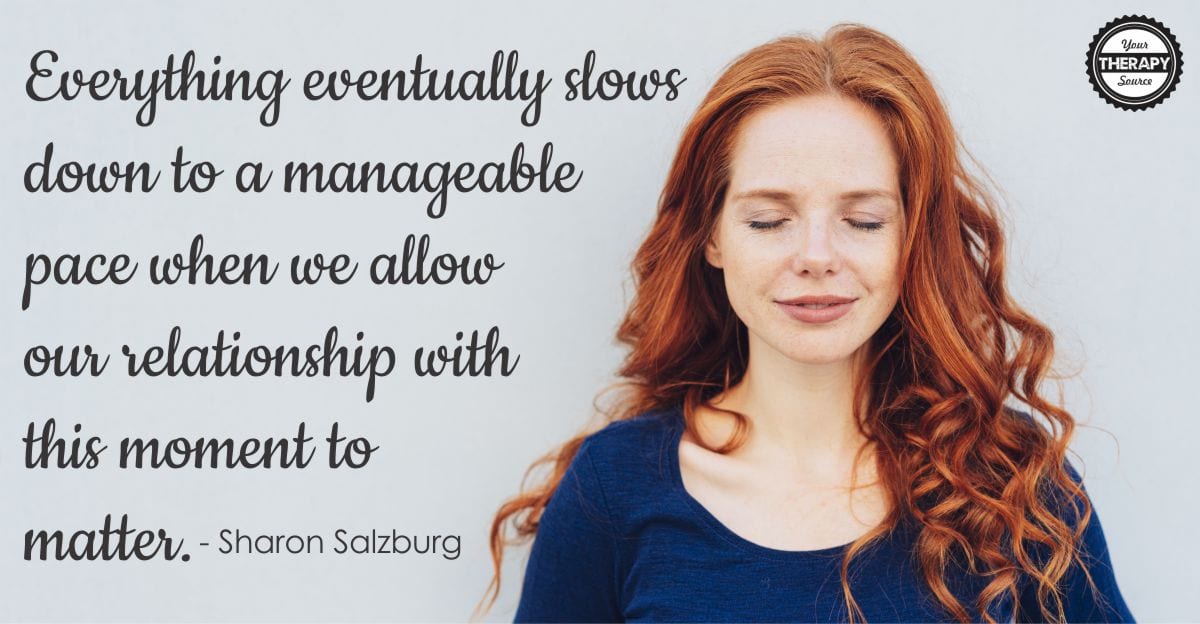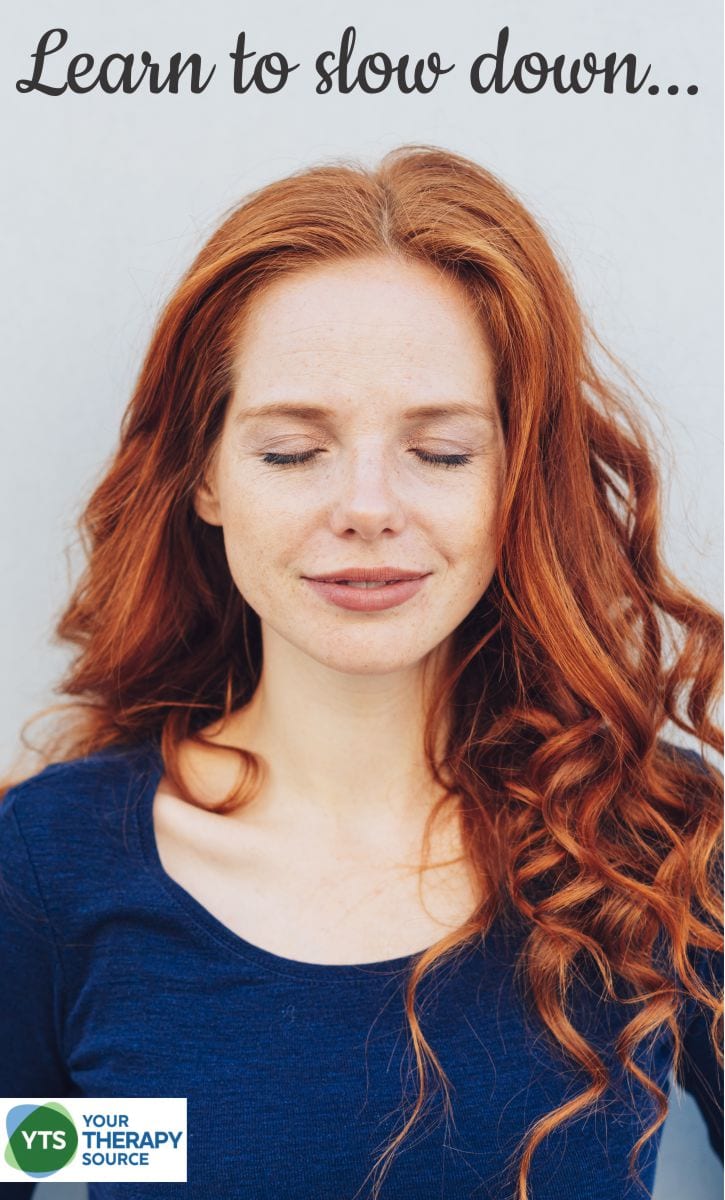Learn How to Slow Down – for Adults and Children!

- to successfully teach children to slow down, you’ll have to authentically embody it.
- to be present and able to enjoy your own life, you need to cultivate a slower speed – a speed that allows you to receive, respond, and create meaning.
Step 1 How to Slow Down: Make Friends with Time
Before you get out of bed, repeat to yourself several times: I have plenty of time. And I so appreciate the time that I have. Notice if some inner voice starts making objections. If so, address them. Have you planned too much? Have you not allotted enough time to get from A to B if there’s traffic. Whatever shows up, acknowledge it with a promise to look into it later and if need, make changes. Then, go back to repeating: I have plenty of time, until you actually feel appreciative in your heart and body. Let in that Time is the gift that allows you to experience your life, express yourself in it, and share it with the people you love.
Step 2: Prioritize Well-Being – Let Your Body Be Your Guide
Now that you and Time are friends, notice how you feel. Name the quality – open, present, relaxed, easy, available, happy, soft, alive. Set an intention to BE that way throughout your day. Make sustaining that feeling in your body your top priority and move your to-do list down to secondary! Use this feeling/quality as your compass. Whenever you notice you don’t feel that way, shift yourself back into it. If you experience that you are unable to shift yourself to a state of ease or that you spend most of your day stressed, recognize that you are negatively impacting your health and it’s time to make some lifestyle changes.
Step 3 How to Slow Down: Cultivate a daily meditation or mindfulness practice
It’s vital to spend at least 15 minutes a day in a practice that calms your nervous system, clears your mind, and develops your self-awareness. To be able to slow down and be mindful throughout the day, you need to easily and quickly be able to drop into that slowed down place in your body. There are many meditation, mindfulness, and self-care tools and techniques to choose from such as self-regulation cards, videos and curriculum. My practice always starts with:
- Sending my energy and awareness down to connect /ground to earth. I like to imagine being a tree or mountain and that the earth is holding me.
- Resting back into wherever I am – the chair, the bed, the floor. I release any tension to gravity and acknowledge the support I receive in return.
- Breathing fully and slowly in and out my nose and slowing my inner speed. I also imagine my eyes widening apart and my forehead expanding like the horizon, and my mid-brain soft and fluid.
- Sometimes I visualize someone I love or something for which I am grateful in order to attune to the positive.
- Then, I notice how my inner sensations have shifted and I acknowledge myself for choosing to make that shift.
- I identify with my awareness and sit with what is. I allow what arises and observe with neutrality.
Step 4: Re-Organize
Re-organize your life by applying the Priority Principle. Distinguish what is important from what is urgent. Important activities have an outcome that leads to us achieving our bigger goals and intentions.
Urgent activities demand attention now and are usually associated with maintenance or achieving someone else’s goals. In other words, urgent is not important, and important is never urgent.
Identify the intentions and goals that deeply matter to you and attend to them first. Stop the urgent tasks from pulling your focus, eating up your time, and leaving you stressed out.
If you want to successfully slow down, enjoy your life, be a mindful parent, write a book, get healthier, or create something new inside of a full life – you must value your time and designate how you will spend it.
Step 5 How to Slow Down: It’s okay to Say No
As you learn how to slow down and start to re-prioritize and re-organize, you become more intentional about your life. If you’ve been through a process with Steps 1 – 4, chances are you more protective of how you want to spend your time and aware of how much time you need for the things you really care about.
Hand in hand with creating what you want for yourself is holding a boundary with others. Be honest with them about what you want for yourself. That usually takes the sting out of saying: No. It can also steer the conversation toward mutual support. How might you help each other in slowing down, enjoying life, and focusing on what’s truly important?
Step 6: Teach children How to Slow Down
After you practice and learn to slow down your own lifestyle and pace, now you are in the perfect position to teach children how to slow down. Instruct and review steps 1 through 5 with the children to reset their pace.
Pediatric therapists, teachers, and parents will benefit from this easy to implement yoga lesson plan, I Can Slow Down, to teach children mindfulness, self-regulation, and self-calming skills. The step-by-step lesson plan requires zero preparation!
Have you noticed that children are frequently overstimulated, fidgety, or constantly on the go? In today’s fast-paced society it can be very difficult to help children be present in the moment and ready to learn.
Developed by a teacher and a Physical Therapist, this 11-page yoga lesson plan PDF document will be delivered electronically immediately following payment.
How it Works:
- Download the yoga lesson plan, I Can Slow Down.
- Follow the step by step directions: Connect, Affirm, Breathe, Express, Play, Move, Guided Imagery, and Reflect.
- Develop self-regulation and self-calming skills in children.
The I Can Slow Down yoga lesson plan provides successful results through:
- providing multisensory learning to self-regulate and calm.
- teaching children the skills to be present in the moment through positive affirmations, breathing exercises, play, and guided imagery.
- physical activity and core strengthening through yoga sequences (includes 3 pages of with basic pictures of the yoga poses).
- self- expression and self-reflection on maintaining a calm state.
- easy guidelines for implementation.
Other resources to help maintain a “ready to learn” body:
Too Slow, Just Right or Too Fast
Self-Assessments and Checklists for Good Work Habits

Parts of this article was originally written by Leah Kalish.




